
It’s time to treat yourself to a new experience point with some extra-adorable Slime and She-slime kamaboko.
By its very linguistic nature, “slime” is supposed to be sort of gross and repulsive. After all, if it were something nice, we’d call it “gel” or “gelatin” instead.
A rare but important exception is made, though, for the Dragon Quest Slime, the starter-tier monster that’s been greeting new adventurers in each and every installment in the role-playing video game series since the original in 1986. As proof of how inarguable capital-S Slime’s “cute” status is in Japanese pop culture, it’s considered not only adorable, but appetizing too, and today’s taste test features an especially apt medium in which to render the Dragon Quest muse: kamaboko, traditional Japanese fish cake.
A fantasy creature with a professional resume as long as Slime’s naturally requires a partner with a similarly certified reputation, and the Slime Kamaboko is thus made in the town of Odawara, Kanagawa Prefecture by kamaboko maker Suzuhiro. Though Odawara in general is famous for its kamaboko, Suzuhiro is particularly prestigious, having been in business for over 150 years (and which wowed us a while back with its beautiful hydrangea kamaboko).
Despite its exalted pedigree, though, you can actually get the Slime Kamaboko for free by heading to Odawara Castle, firing up the Dragon Quest Walk mobile game, and completing a quest which makes you eligible to win a box. However, since we’re much more likely to be described as lazy than heroic, we instead logged on to Suzuhiro’s online shop, where you can order the Slime Kamaboko for 880 yen (US$8.30). We weren’t the only ones with that plan, though, and there were so many people accessing Suzuhiro’s site following the Slime’s release that it took us a solid week of checking back until we could place our order, making the purchase process feel a little like grinding for experience points.
Eventually our persistence was rewarded, though, and after a few days our Slime arrived. Well, actually our Slimes arrived. Opening the box (which bears a Japanese-style illustration of the creatures), we discovered that it contained not only the orthodox blue Slime, but also a bright orange She-slime too.
While the regular Slime and She-slimes have slightly different stats in the Dragon Quest games, their kamaboko versions’ only difference is their color (Suzuhiro uses only natural colorings, by the way). And while they’re definitely longer and narrower in shape than the semi-spherical form we’re used to seeing Slimes in, no mater where you slice the kamaboko, a Slime face appears, similar to what happens with Japan’s old-school Kintaro Ame candies.
Kamaboko has a slightly squishy texture, and while it’s firm enough to hold its shape, it’s also soft enough that the shape will wiggle and jiggle, which really helps make it look like an actual Slime crawled out of your TV and has crossed from the video game world into ours.
Now, if you’ve never eaten fish cake before, the idea of eating Slime kamaboko might not sound much more appealing than eating any other sort of random slime. Rest assured, though, that kamaboko is fairly mild in flavor, and not especially intimidating as far as foodstuffs go. As a matter of fact, if you’ve eaten much ramen, odds are you’ve already come across kamaboko in the form of the naruto disc that’s often floating in the broth.
Since kamaboko is more of a side dish or accent to the main course, we decided to insert ours into a bento boxed lunch, with two Slimes lying in wait like they’re a random RPG encounter.
▼ We got the bento at the convenience store, which once again proves to be a source of photogenic food in Japan.
And since we could enjoy the company of as many slimes as we could slice, later on we tossed a few into a bowl of udon noodles.
We give the Slime Kamaboko full marks in both looks and taste, and if you’d like it to draw near to your next meal, Suzuhiro’s order page can be found here.
Images ©SoraNews24
● Want to hear about SoraNews24’s latest articles as soon as they’re published? Follow us on Facebook and Twitter!
[ Read in Japanese ]

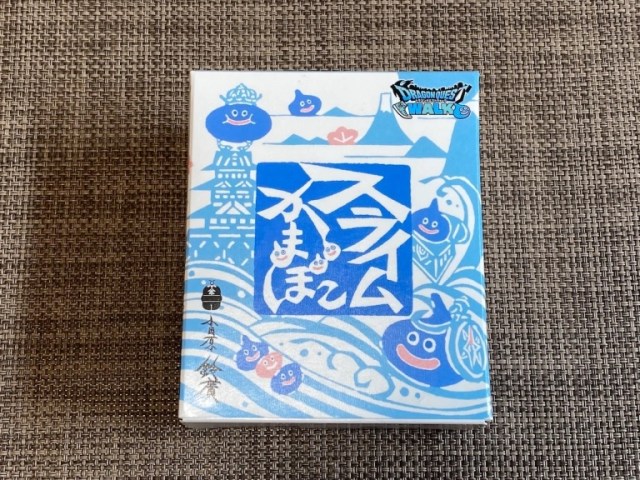
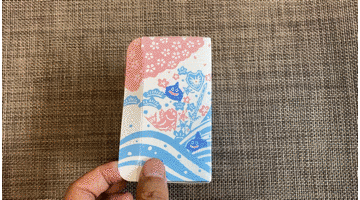
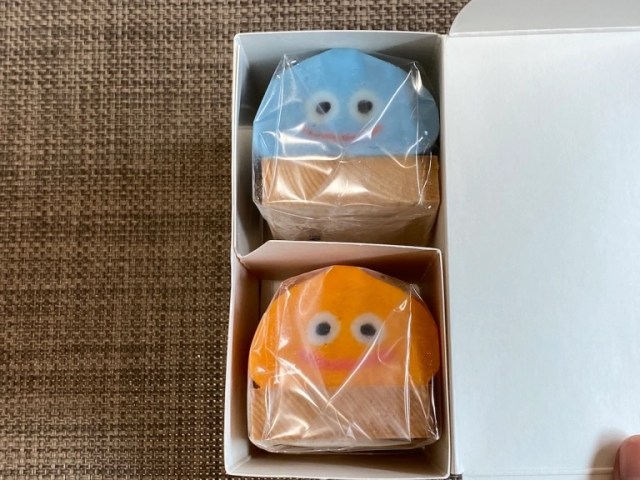
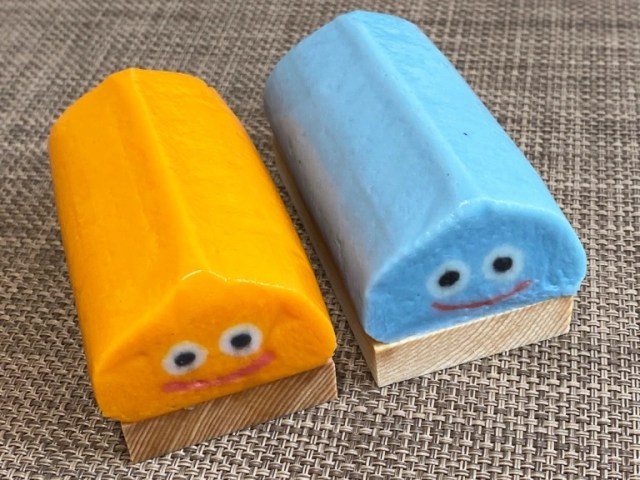
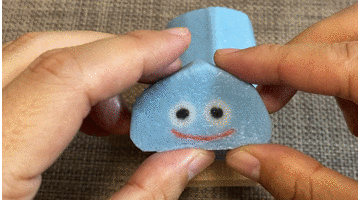
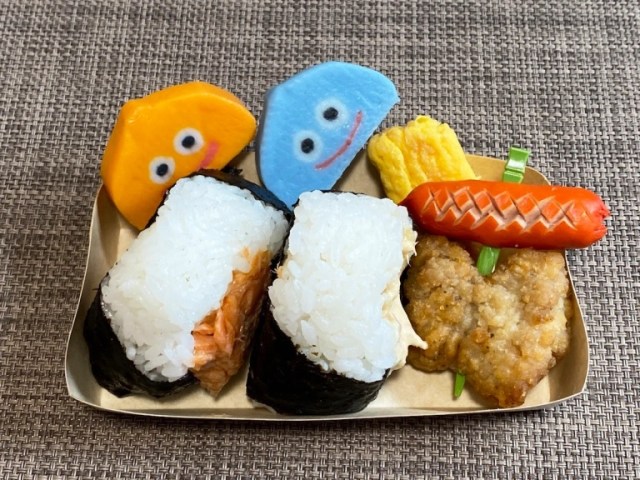

 Dragon Quest Slime sandwich molds are drawing near in Japan
Dragon Quest Slime sandwich molds are drawing near in Japan Dragon Quest slime donuts draw near in Tokyo!
Dragon Quest slime donuts draw near in Tokyo! Looks like Slime and tastes mysterious – Taste-testing Japan’s newest Dragon Quest sweets
Looks like Slime and tastes mysterious – Taste-testing Japan’s newest Dragon Quest sweets A Dragon Quest slime glass draws near! What will you drink?
A Dragon Quest slime glass draws near! What will you drink? Dragon Quest’s Slime is now a geisha (and delicious)
Dragon Quest’s Slime is now a geisha (and delicious) Japan now has potato chip-covered chocolate, and it’s amazing!【Taste test】
Japan now has potato chip-covered chocolate, and it’s amazing!【Taste test】 Village Vanguard’s most expensive Black Lucky Bag sets an ominous tone for 2026
Village Vanguard’s most expensive Black Lucky Bag sets an ominous tone for 2026 Japanese beef bowl chain Sukiya’s 2026 Smile Box lucky bag basically pays for itself
Japanese beef bowl chain Sukiya’s 2026 Smile Box lucky bag basically pays for itself Evangelion original anime studio Gainax is now completely dissolved, Eva’s creator mourns ruined friendships
Evangelion original anime studio Gainax is now completely dissolved, Eva’s creator mourns ruined friendships Japan’s number-one cosplayer Enako creates jaw-dropping crowd at Winter Comiket【Photos】
Japan’s number-one cosplayer Enako creates jaw-dropping crowd at Winter Comiket【Photos】 Green tea chocolate-covered potato chips arrive in Japan! 【Taste test】
Green tea chocolate-covered potato chips arrive in Japan! 【Taste test】 Four Shinto shrines to pray for love at in Japan to start the New Year
Four Shinto shrines to pray for love at in Japan to start the New Year Tokyo Station staff share their top 10 favorite ekiben
Tokyo Station staff share their top 10 favorite ekiben Chikan molester runs away from Japanese schoolgirls at train station in Japan【Video】
Chikan molester runs away from Japanese schoolgirls at train station in Japan【Video】 Crow surprises Japanese commuters by attempting to buy train ticket from a machine【Video】
Crow surprises Japanese commuters by attempting to buy train ticket from a machine【Video】 Starbucks Japan ready to get Year of the Horse started with adorable drinkware and plushies【Pics】
Starbucks Japan ready to get Year of the Horse started with adorable drinkware and plushies【Pics】 Hayao Miyazaki says Happy New Year to Studio Ghibli fans with new art for Year of the Horse
Hayao Miyazaki says Happy New Year to Studio Ghibli fans with new art for Year of the Horse We found possibly the quietest Japanese-style hotel in Tokyo’s bustling Shinjuku district
We found possibly the quietest Japanese-style hotel in Tokyo’s bustling Shinjuku district Cup Noodle tries an authentic Jiro-style ramen, but something’s not quite right
Cup Noodle tries an authentic Jiro-style ramen, but something’s not quite right The best Starbucks Japan Frappuccinos we want to drink again in 2026
The best Starbucks Japan Frappuccinos we want to drink again in 2026 We revisited Sweets Paradise after a decade to see if Japan’s dessert buffet still delivers
We revisited Sweets Paradise after a decade to see if Japan’s dessert buffet still delivers That time Seiji called JASRAC to ask why he didn’t get paid royalties for his song being on TV
That time Seiji called JASRAC to ask why he didn’t get paid royalties for his song being on TV Japan’s oldest largetooth sawfish in captivity back on display in Mie Prefecture
Japan’s oldest largetooth sawfish in captivity back on display in Mie Prefecture Pizza Hut Japan’s hot lucky bags are perfect for a New Year’s pizza party
Pizza Hut Japan’s hot lucky bags are perfect for a New Year’s pizza party 7-Eleven Japan starts new temporary luggage storage service in over 300 branches
7-Eleven Japan starts new temporary luggage storage service in over 300 branches Disillusionment at Tsukiji’s tourist-target prices led us to a great ramen restaurant in Tokyo
Disillusionment at Tsukiji’s tourist-target prices led us to a great ramen restaurant in Tokyo Starbucks teams up with 166-year-old Kyoto doll maker for Year of the Horse decorations【Photos】
Starbucks teams up with 166-year-old Kyoto doll maker for Year of the Horse decorations【Photos】 Tokyo considering law requiring more trash cans following litter increase in heavily touristed area
Tokyo considering law requiring more trash cans following litter increase in heavily touristed area Tokyo’s Tsukiji sushi neighborhood asks tour groups to stay away for the rest of the month
Tokyo’s Tsukiji sushi neighborhood asks tour groups to stay away for the rest of the month Tokyo event lets you travel back in time, for free, to celebrate 100 years since Showa era start
Tokyo event lets you travel back in time, for free, to celebrate 100 years since Showa era start Japan may add Japanese language proficiency, lifestyle classes to permanent foreign resident requirements
Japan may add Japanese language proficiency, lifestyle classes to permanent foreign resident requirements Sanrio theme park in Japan announces plans to expand into a Sanrio resort
Sanrio theme park in Japan announces plans to expand into a Sanrio resort Stamina-destroying “Paralysis Noodles” are Tokyo’s newest over-the-top ramen innovation
Stamina-destroying “Paralysis Noodles” are Tokyo’s newest over-the-top ramen innovation Survey asks foreign tourists what bothered them in Japan, more than half gave same answer
Survey asks foreign tourists what bothered them in Japan, more than half gave same answer Japan’s human washing machines will go on sale to general public, demos to be held in Tokyo
Japan’s human washing machines will go on sale to general public, demos to be held in Tokyo Japan’s deadliest food claims more victims, but why do people keep eating it for New Year’s?
Japan’s deadliest food claims more victims, but why do people keep eating it for New Year’s? We deeply regret going into this tunnel on our walk in the mountains of Japan
We deeply regret going into this tunnel on our walk in the mountains of Japan Studio Ghibli releases Kodama forest spirits from Princess Mononoke to light up your home
Studio Ghibli releases Kodama forest spirits from Princess Mononoke to light up your home Major Japanese hotel chain says reservations via overseas booking sites may not be valid
Major Japanese hotel chain says reservations via overseas booking sites may not be valid Put sesame oil in your coffee? Japanese maker says it’s the best way to start your day【Taste test】
Put sesame oil in your coffee? Japanese maker says it’s the best way to start your day【Taste test】 No more using real katana for tourism activities, Japan’s National Police Agency says
No more using real katana for tourism activities, Japan’s National Police Agency says Starbucks Japan reveals new sakura drinkware collection, inspired by evening cherry blossoms
Starbucks Japan reveals new sakura drinkware collection, inspired by evening cherry blossoms Updated cherry blossom forecast shows extra-long sakura season for Japan this year
Updated cherry blossom forecast shows extra-long sakura season for Japan this year Cooking magic — Take a look at this beautiful water cake turned into Dragon Quest slime!
Cooking magic — Take a look at this beautiful water cake turned into Dragon Quest slime! Japan’s new old-school Dragon Quest sweets are Slime-like in more ways than one【Taste test】
Japan’s new old-school Dragon Quest sweets are Slime-like in more ways than one【Taste test】 We munch on some real-life Slime dumplings from the Dragon Quest Walk collaboration
We munch on some real-life Slime dumplings from the Dragon Quest Walk collaboration Celebrate Dragon Quest’s 30th anniversary by suppressing slimes on your smartphone
Celebrate Dragon Quest’s 30th anniversary by suppressing slimes on your smartphone I had no idea you could win crane game prizes in Japan the way my friend won this Dragon Quest Slime
I had no idea you could win crane game prizes in Japan the way my friend won this Dragon Quest Slime Slime bread arrives in Japanese convenience stores and in our Dragon Quest-loving bellies
Slime bread arrives in Japanese convenience stores and in our Dragon Quest-loving bellies Dragon Quest Burgers and Slime drinks are coming to McDonald’s Japan【Video】
Dragon Quest Burgers and Slime drinks are coming to McDonald’s Japan【Video】 Humongous Dragon Quest Slimes appear at park in Japan【Photos】
Humongous Dragon Quest Slimes appear at park in Japan【Photos】 Japanese mom’s hand-made Slime masks draw near, boost kid’s cuteness and protection stats【Photos】
Japanese mom’s hand-made Slime masks draw near, boost kid’s cuteness and protection stats【Photos】 What would Dragon Quest look like in real life? Fan’s Slime travel photo series shows us【Photos】
What would Dragon Quest look like in real life? Fan’s Slime travel photo series shows us【Photos】 Newsflash: Silver “Dragon Quest Metal Slime Edition” PlayStation 4 unveiled by Sony 【Updated】
Newsflash: Silver “Dragon Quest Metal Slime Edition” PlayStation 4 unveiled by Sony 【Updated】 Our Reporter Heads to Barcelona, Eats Delicious Dragon Quest Bubble Slime
Our Reporter Heads to Barcelona, Eats Delicious Dragon Quest Bubble Slime Fit’s gum collaborating with Slime for Dragon Quest’s 30th anniversary
Fit’s gum collaborating with Slime for Dragon Quest’s 30th anniversary Final Fantasy Chocobo and Dragon Quest Slime street sweets on sale in Tokyo【Taste test】
Final Fantasy Chocobo and Dragon Quest Slime street sweets on sale in Tokyo【Taste test】 Dragon Quest Super Light Cafe draws near! Command?
Dragon Quest Super Light Cafe draws near! Command?
Leave a Reply